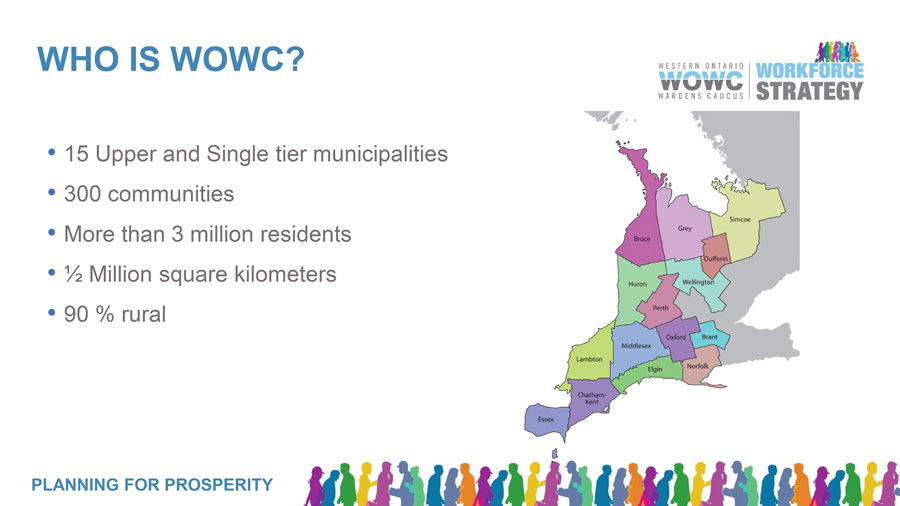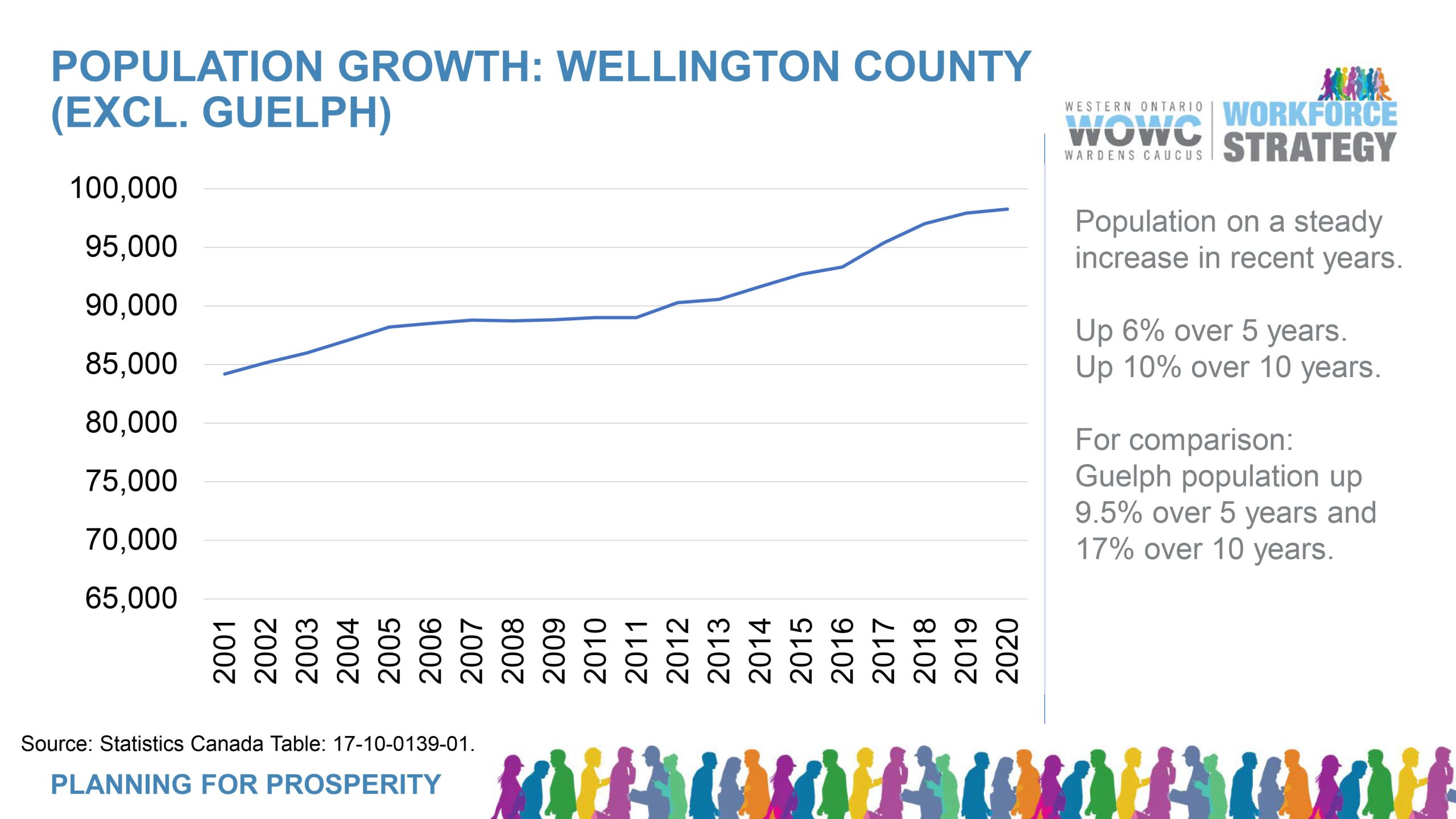WELLINGTON COUNTY – Population trends in Wellington County are more positive than in many parts of the region, according to a new workforce strategy report from the Western Ontario Wardens Caucus (WOWC).
However, a population push is still recommended to meet future employment needs both locally and across the region.
“Wellington County is in really great shape compared to the demographic situation of other counties,” WOWC economic development executive director Kate Burns Gallagher told county council on Feb. 24.
The WOWC territory includes 15 upper and single tier municipalities covering 300 communities west of the Greater Toronto Area. The region includes more than three million residents – about 10 per cent of Canada’s population – spread over a half-million square kilometres.
“And 90 per cent of that region is rural,” Burns points out.
The report cautions the WOWC area’s population growth for 25 to 55-year-olds is insufficient to meet future job demands.
“We recognize that we actively need to attract workers to the region,” said Burns.
The report shows a steady increase in Wellington County’s population in recent years, with numbers up 6% over the five years leading up to 2020 and 10% over the preceding 10 years.
By comparison, Guelph’s 2020 population was up 9.5% over five years and 17% over 10 years.
Unlike much of Ontario, the Wellington County birth rate, excluding the Guelph census metropolitan area (CMA) which consists of Guelph, Guelph-Eramosa and Puslinch, remains positive with 130 more births than deaths in 2020.
The Guelph CMA also had a positive natural population growth rate, the study indicates.
Interprovincial movement was the primary source of local population growth over the past decade, bringing an average of 713 people per year to the county over the past four years, compared to less than 200 per year between 2002 and 2016.
The study also shows relatively few immigrants settling in the county census area, averaging 71 new residents per year over the past four years, while the Guelph CMA has averaged more than 900 annually.
“We see new immigrants mostly going to urban centres, which is very similar to all of our other counties in the region,” Burns stated.
Despite the positive population trends, Burns explained Wellington County is still not on track to meet growth requirements to fulfil anticipated job demands.
Burns told council employment in the region has increased by 14% in the last 10 years and is expected to increase by another 7% in the next decade.
She said 7,500 people are needed to replace local residents expected to retire or leave the workforce in the coming 10 years and an additional 2,500 people are needed to meet the demand generated by anticipated growth.

(WOWC image)
“So you’re looking at 10,000 new people needed in Wellington County in the next 10 years, which is approximately 40% more new workers needed compared to the last 10 years,” she explained.
“We need to figure out where all these folks are going to come from and where they’re going to live, where are they working and what are the fastest-growing sectors in Wellington County.”
Burns said manufacturing is currently the fastest-growing sector in the county, followed by healthcare, construction, administration and support services, and personal services.
On a regional scale, the study indicates the WOWC area is going to need over 200,000 people for growth and replacement demand over the course of the next 10 years.
“We also found, and this is no shocker I’m sure to anyone here, that prices are escalating for housing across the region and high growth areas are particularly challenged to meet the demand,” said Burns.
“And the NIMBY, not in my backyard, response is really predominant when we’re looking at the housing.”
The study found that 96 per cent of businesses across the WOWC region have 25 or fewer employees.
“So that means there’s a lot less capacity to make change and those businesses need a lot more support from our economic development offices,” Burns pointed out.
“We have a strategy that outlines four key priorities with our workforce: retention attraction, leveraging our existing population, attainable housing, and employee recruitment and retention.”
Burns continued, “From those priorities, the plan has a very clear vision and mission … which is to provide and advocate for regional workforce development, resources and support, build workforce development capacity and foster collaboration between member municipalities and other workforce stakeholders.”
Councillor George Bridge, chair of the county’s economic development committee, said Burns’ presentation “was sort of the tip of the iceberg,” noting the warden’s caucus has numerous resources available to municipalities.
“The whole idea … is to try to come up with some tool kits in order for people to actually take it back to their local communities and use it,” said Bridge.
“Make sure you do that because every town should be doing that.”
Warden Kelly Linton said working through the WOWC provides Wellington County officials with an opportunity to share best practices.
“And when I think of a great work that we’re doing in the county when it comes to attainable and affordable housing, I really want to make sure that we’re sharing that with the other counties out there because there’s going to be approaches, there’s going to be tools, there’s going to be pilots that we do,” said Linton.
“And I want to … make sure we’re sharing that with our partners and I want to get their lessons learned of their best practices, so that we don’t have to reinvent the wheel on every single project.”




